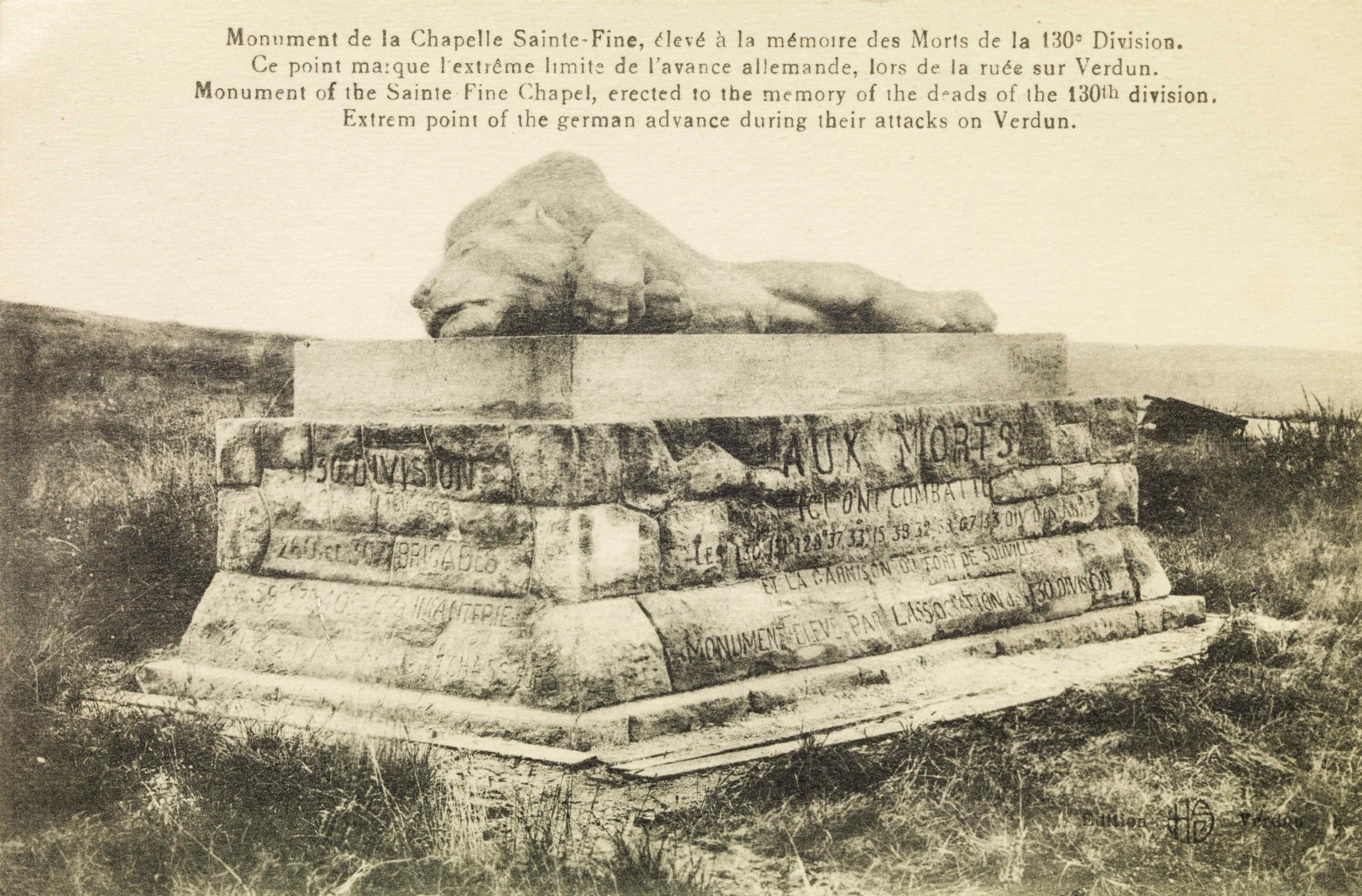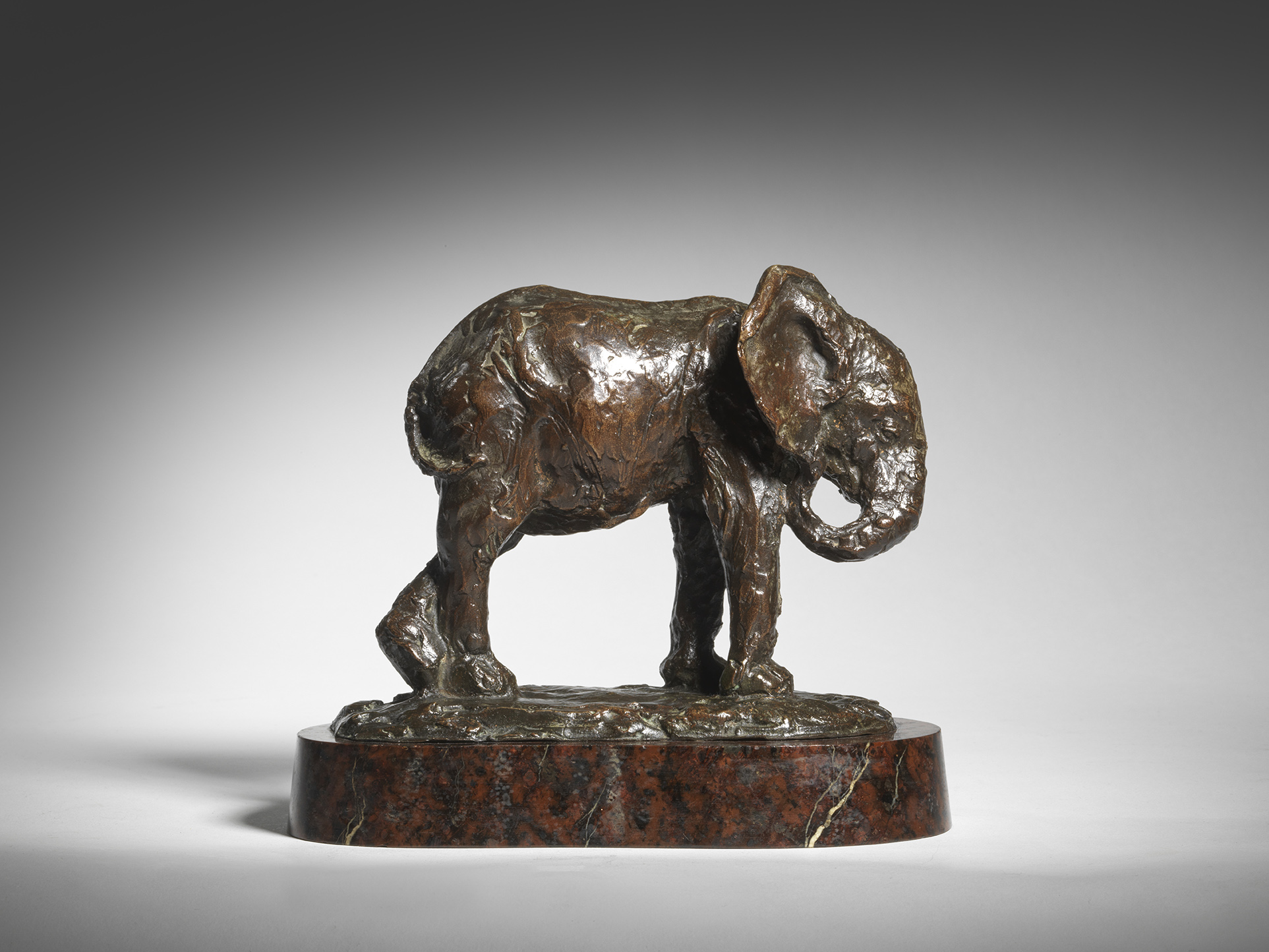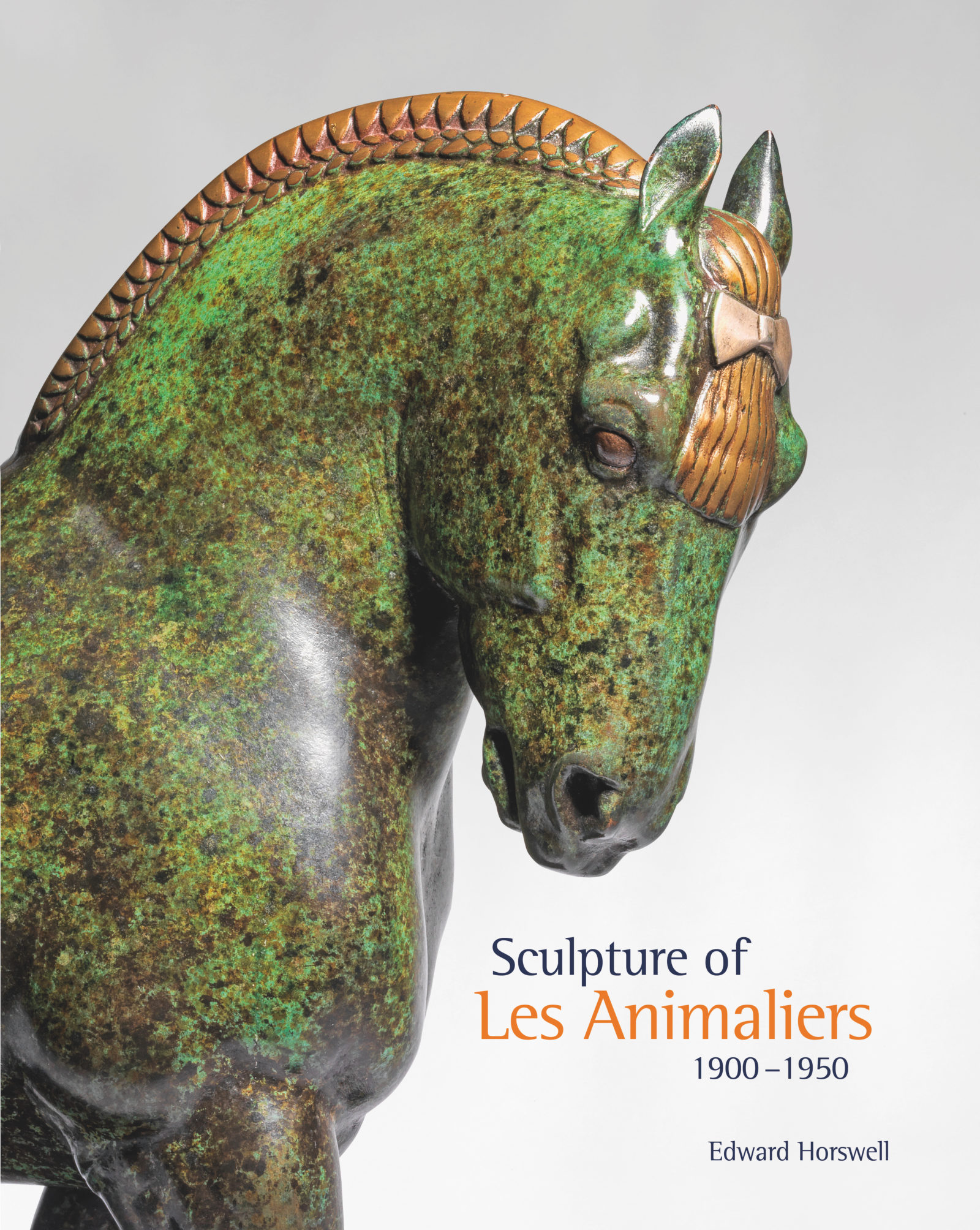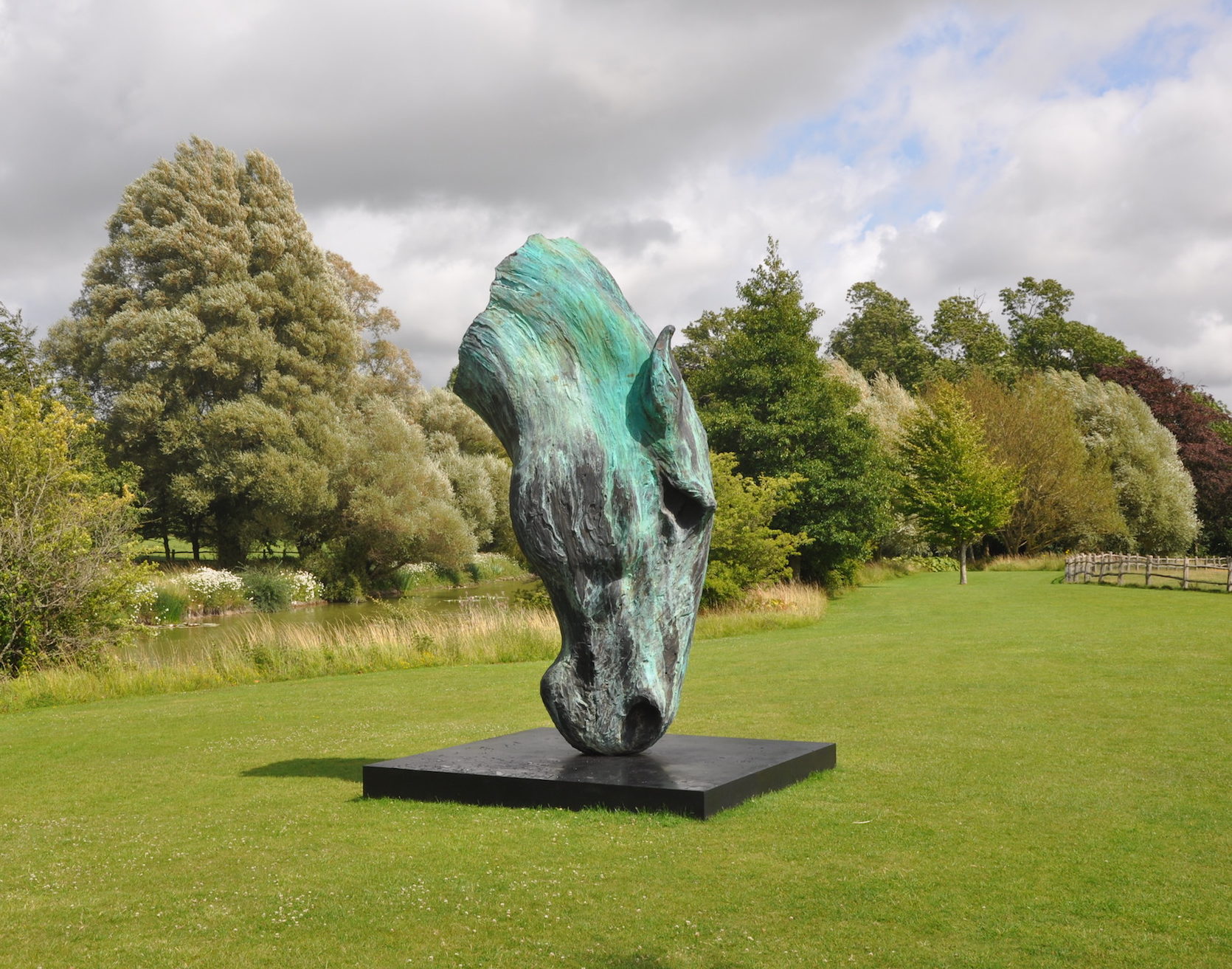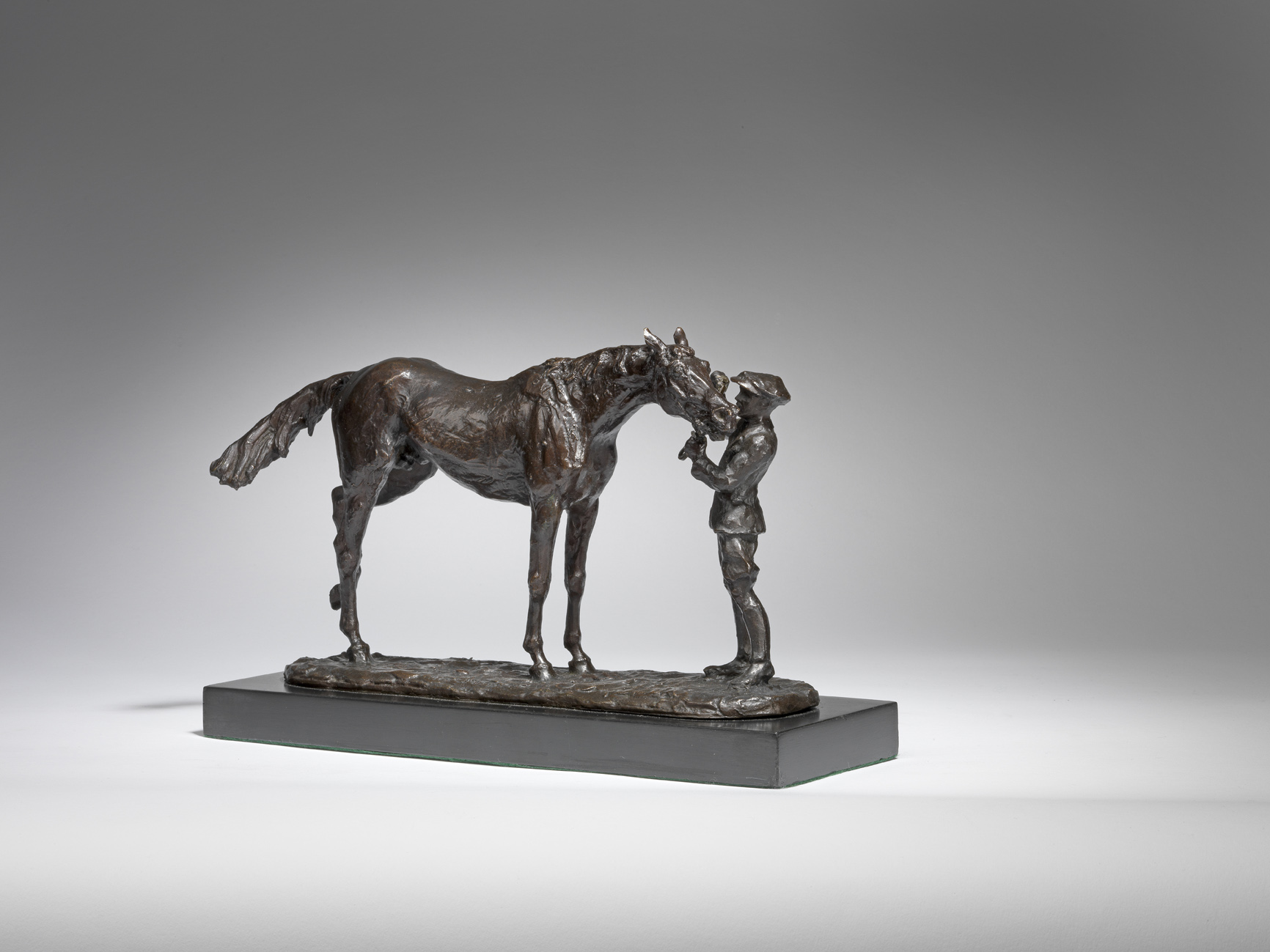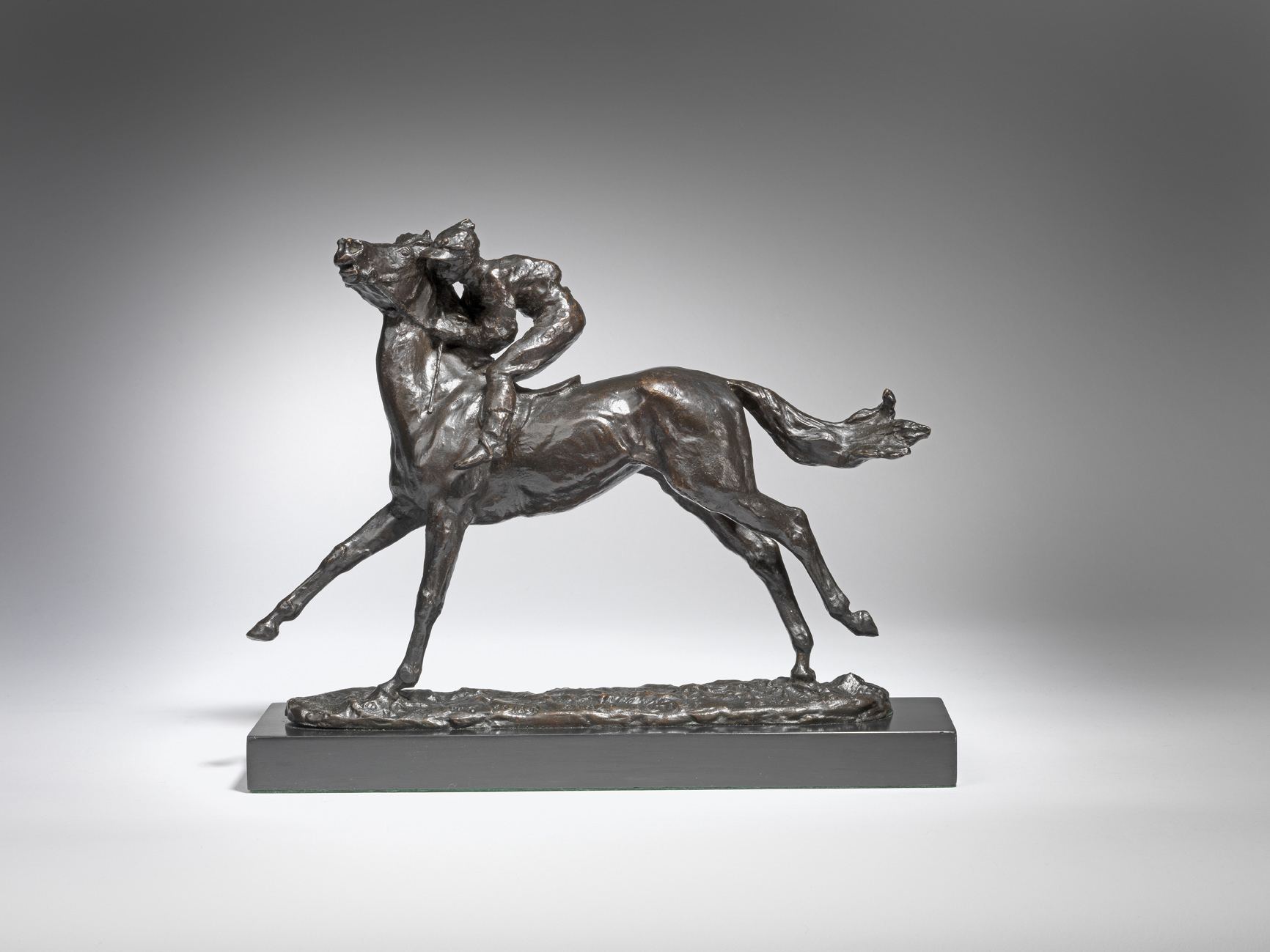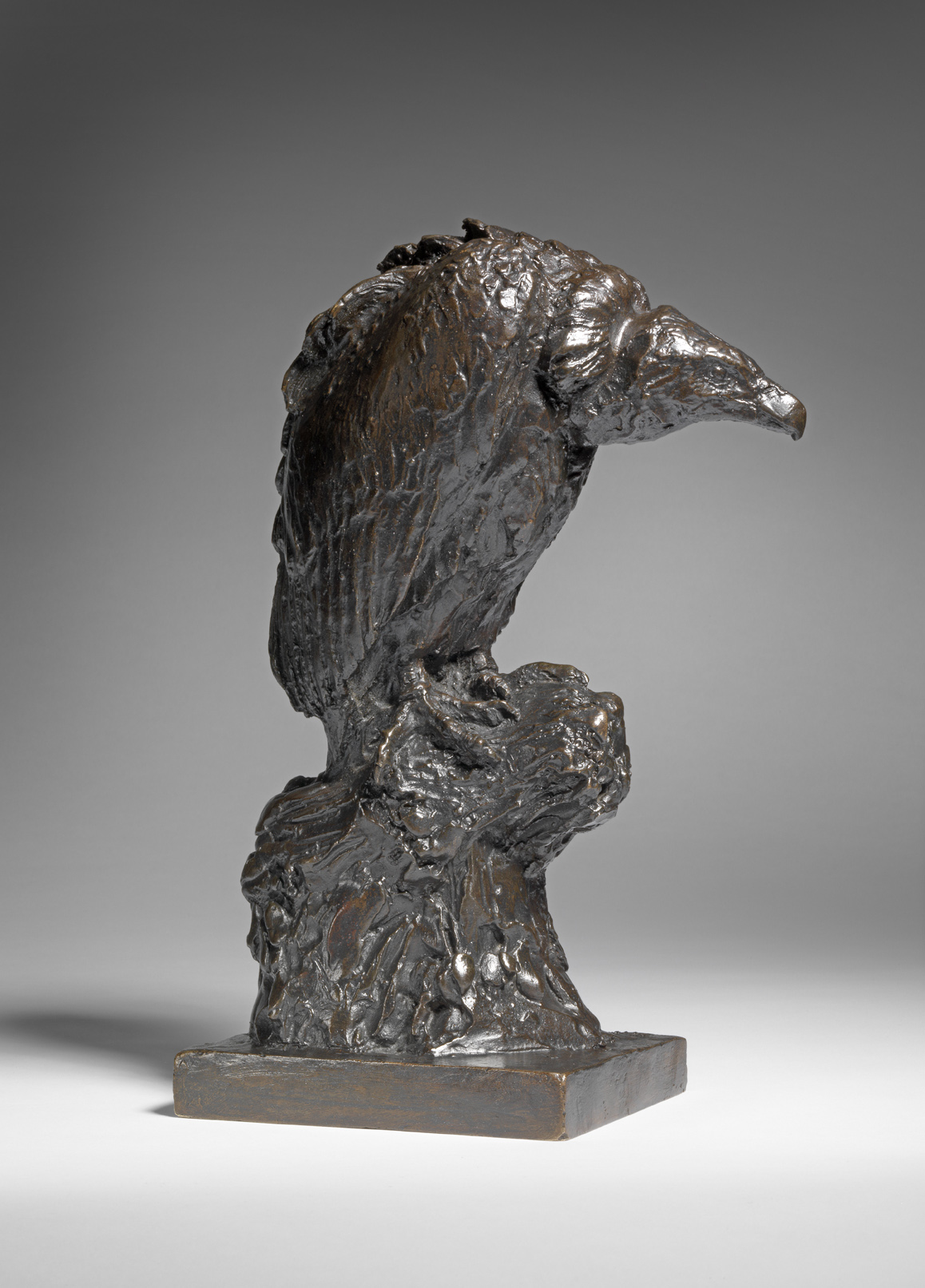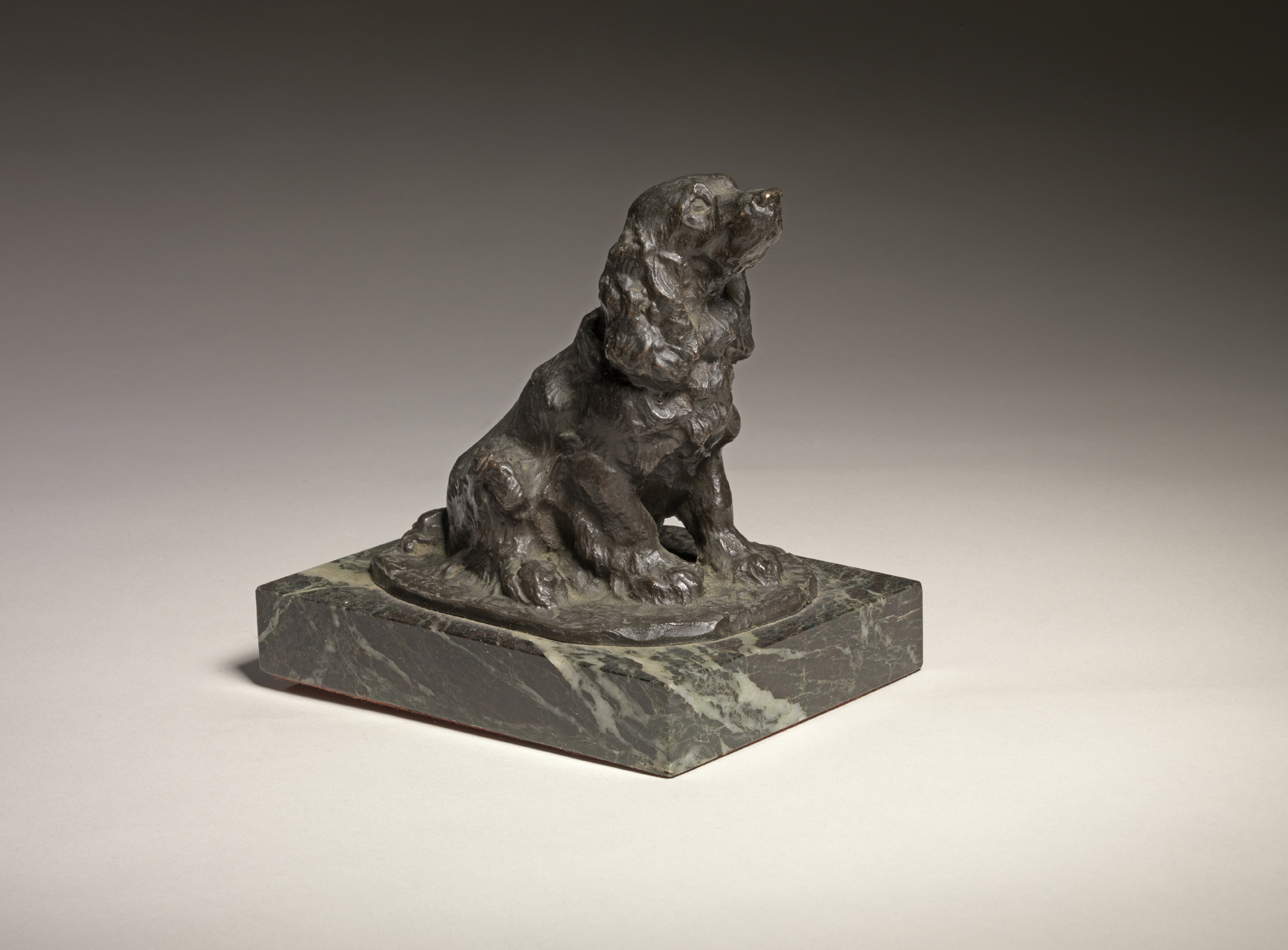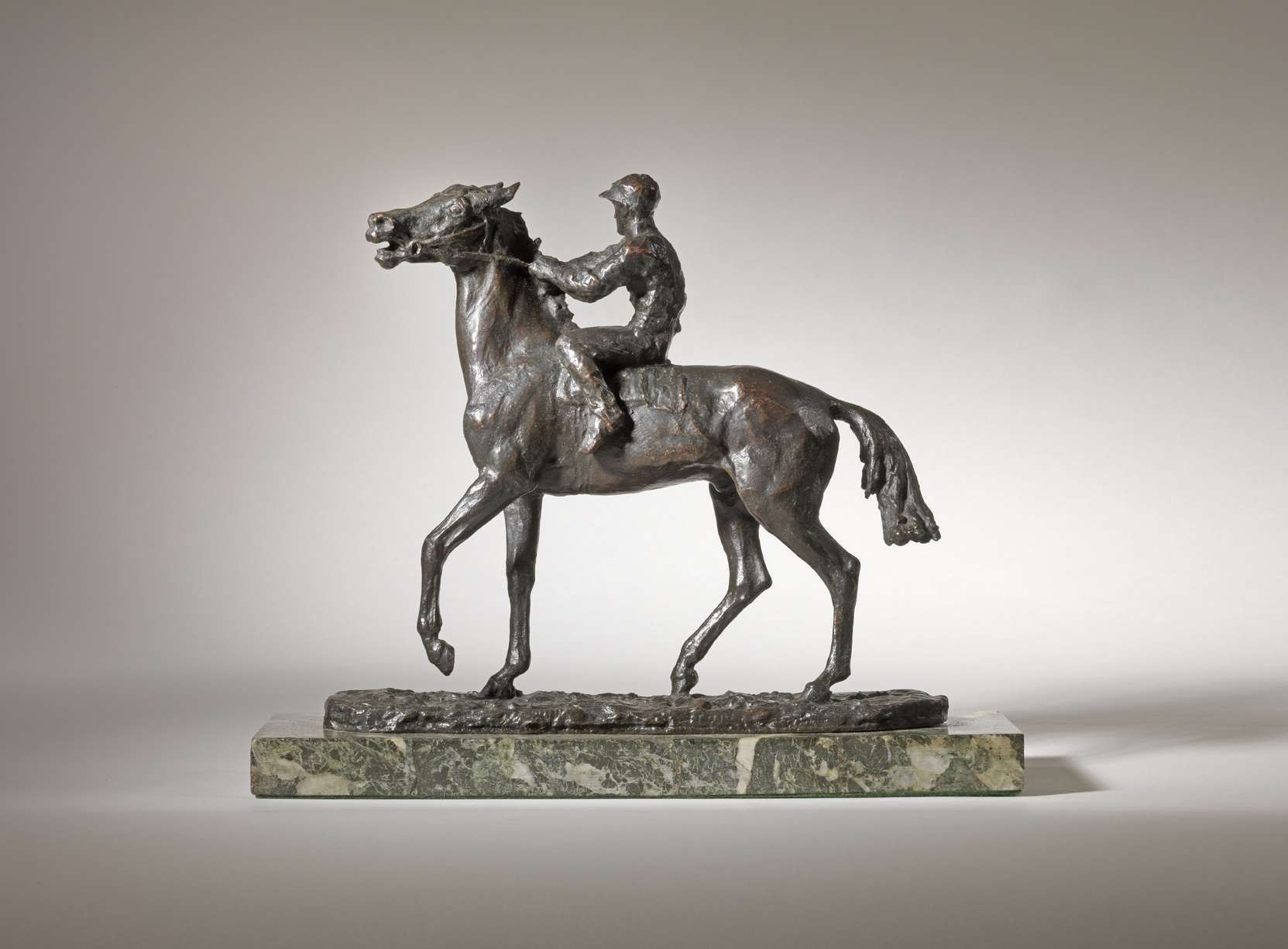With its light, sensitive, nervous touch, reminiscent of Degas, his modelling is beautifully captured in his bronzes and is further enhanced by the process of lost wax casting, a technique that is ideally suited to such impressionistic modelling.
Most Rene Paris’s models were cast in very small numbers probably because he edited his work himself. We have rarely seen more than one example of each different model. Paris never numbered his casts nor included a foundry mark, but his castings are always of fine quality.
René Paris, a butcher’s son from the 17th arrondissement in Paris, was born on 26 November 1881.
He embarked on his artistic career at a very early age, first exhibiting at the Salon des Artistes Français in 1899, shortly after his sixteenth birthday, as a pupil of both the Animalier sculptor Isidore Bonheur and Mathurin Moreau, a prolific industrial artist. He appeared intermittently at the Salon until 1907, still as an apprentice, although under different masters, then with the longer-term patronage of the Animaliers Georges Gardet and Victor Peter. It is highly likely that he acted as a practician, a skilled studio assistant, for all the above artists.
From 1899 to 1907 his financial circumstances seem to have improved: after initially exhibiting waxes and subsequently plasters, he began to show small bronzes in 1907. These were probably orders from wealthy collectors who wanted a portrait of a dog or a horse, both subjects at which Paris excelled and on which he was soon concentrating exclusively. He sculptures of the equine form beautifully depict the tension, exertion, and strength of the beast, even when portraying working animals at rest.
He exhibited at the Salon des Artistes Animaliers following its establishment in 1913, and at the Salon des Artistes Français throughout his career. The latter awarded him a third-class medal in 1912, a silver in 1914, a gold in 1920, a medal of honour in 1938 and a further silver in 1944. In 1937 he won the gold medal at the Exposition International, and the Prix de l’Yser. Lastly, he was awarded the Prix Bonnat in 1945, and the Légion d’Honneur in 1953.
His career followed a traditional path in the spirit of the great modellers of the late 19th century, with a firm grasp on all the necessary technical qualities and skills. Paris carved deftly in stone, Flanders granite, marble, and wood, almost certainly because of his lengthy apprenticeship and laborious practice alongside the great Masters. Between 1904 and 1956, the French government acquired nine of his pieces, all of which were in stone, except for a large plaster in 1904 and a bronze in 1928. With its light, sensitive, nervous touch, his modelling is beautifully captured in his bronzes and is further enhanced by the process of lost wax casting, a technique that is ideally suited to such an impressionistic technique.
It seems that Paris stopped working at some point in the late 1950s. He died in Batz-sur-Mer on the south coast of Brittany on 14 February 1970.


